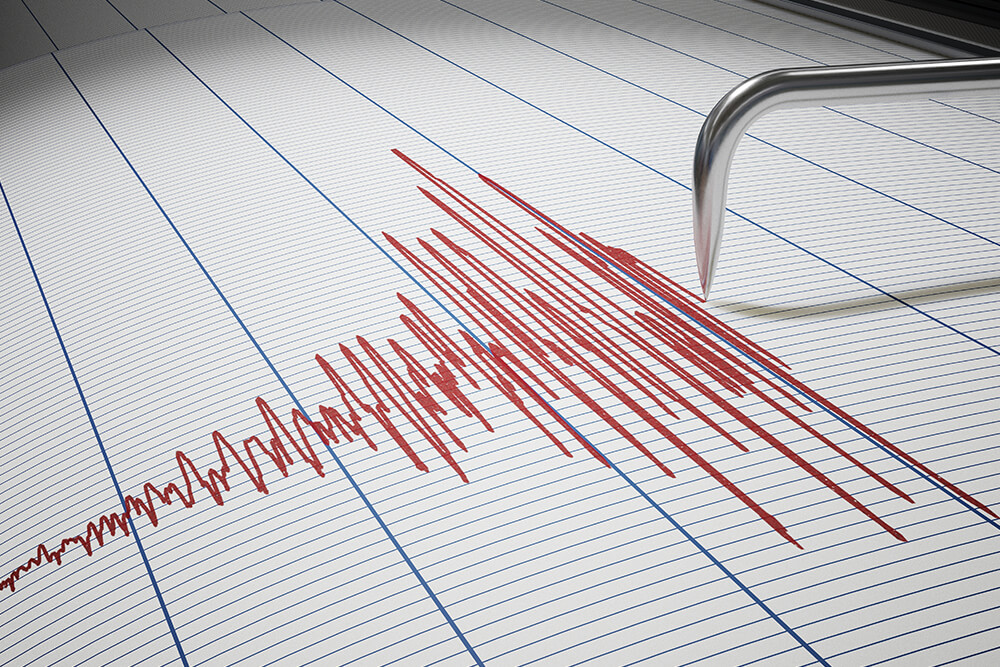Google Builds Largest Earthquake Detection System With Your Phone
2 July 2021
If you carry around an Android smartphone, did you know it can be part of the world’s largest earthquake detection system? Thanks to a collaboration between Google, the United States Geological Survey (USGS), and the California Governor’s Office of Emergency Services (Cal OES), the concept is being vetted as a cost-effective alternative to creating a public infrastructure to detect and alert the public to an earthquake in their area.

Why an Android Phone-Powered Earthquake Alert System?
Earthquakes are a daily occurrence around the world. The earlier the millions of people who live in an earthquake-prone region get notified of a quake (before things begin to shake) so they can drop and take cover, the safer they will be. However, traditional earthquake alert systems are costly to build and deploy. Since all smartphones have little accelerometers in them—a device that detects rotation—Google thought that we might be walking around with a solution to an earthquake detection system. Turns out their hunch was right on target, and smartphones can expand their influence to become life-saving emergency notification devices.
Tested by Android Device Owners in California
Google and collaborators first deployed the Android platform as an earthquake alert system in California. By working with the USGS and Cal OES, Google used the ShakeAlert system to send earthquake alerts. The ShakeAlert system was developed by the country’s leading seismologists. It receives signals from more than 700 seismometers located across the state. While California was able to have this infrastructure in place, many other earthquake-prone areas in the world are not. But the large Android network around the world with millions of smartphones acting as individual seismometers could fill in the gap.
If an individual phone’s accelerometer detects something it thinks could be an earthquake, it sends the signal to Google servers. Then, algorithms go to work, combining that data with info from other smartphones to figure out if an earthquake is actually happening. For this to be effective, the system is racing the speed of light (essentially the speed of phone data) against the speed of an earthquake.
If an earthquake is detected, the system will be able to share accurate information about the extent of the earthquake quickly to those who might face danger because of it.
Google is currently testing the system and cautiously rolling out future phases as it builds confidence in the system’s reliability. Eventually, the plans are to deploy it in areas that don’t have traditional seismic-monitoring systems.
Android Phones Can Detect Both Types of Earthquake Waves
There are two different types of earthquake waves, and the Android phones can detect both. The primary wave or P wave is the fastest and first wave sent out when there’s an earthquake. It’s followed by a secondary wave or S wave that might be slower but usually bigger and causes more destruction to more people. If the Android system can give early warnings out when the P wave is detected, it could help minimize the damage when the S wave comes through.
As anonymized data starts coming to Google’s servers, Bayesian filters and other machine learning algorithms get to work to determine if what the phones are reporting is an actual seismic event. If so, warning alerts go out. Phones nearest to the quake’s epicenter will have less warning than those further afield; however, they can play a critical role in helping safeguard those that will experience the larger secondary wave.
Google works with seismologists to figure out the appropriate alerts for different levels of earthquakes. When time is of the essence, the alerts must convey critical information concisely.
Once Google has refined its earthquake alert system, it does plan to release an API. This paves the way for developers to take the framework built by Google and create solutions for a lot of important use cases that could make living with quakes easier. Imagine if there were systems built to shut off gas valves, transportation management systems such as traffic lights could be manipulated to keep people away from danger and more through future development.
For now, Google is focused on refining its system to reduce the number of false positives.
Google is including this capability as part of Google Mobile Services, which makes it accessible for most Android phones used today.
Related Articles
What Is Zero Click And Why Is It Turning Marketing On Its Head?
By now, “smart” versions exist of just about every home appliance, gadget and gizmos we can think of. However, manufacturers continue[...]
3 AI Prompts That Turn ChatGPT Into Your Friend And Therapist
By now, “smart” versions exist of just about every home appliance, gadget and gizmos we can think of. However, manufacturers continue[...]
7 Terrifying AI Risks That Could Change The World
By now, “smart” versions exist of just about every home appliance, gadget and gizmos we can think of. However, manufacturers continue[...]
How Globant Is Reinventing Professional Services With AI Pods And Subscription Models
By now, “smart” versions exist of just about every home appliance, gadget and gizmos we can think of. However, manufacturers continue[...]
Myth Or Reality: Will AI Replace Computer Programmers?
By now, “smart” versions exist of just about every home appliance, gadget and gizmos we can think of. However, manufacturers continue[...]
Land Your Next Job With AI Help (Prompts Included)
By now, “smart” versions exist of just about every home appliance, gadget and gizmos we can think of. However, manufacturers continue[...]
Sign up to Stay in Touch!
Bernard Marr is a world-renowned futurist, influencer and thought leader in the fields of business and technology, with a passion for using technology for the good of humanity.
He is a best-selling author of over 20 books, writes a regular column for Forbes and advises and coaches many of the world’s best-known organisations.
He has a combined following of 4 million people across his social media channels and newsletters and was ranked by LinkedIn as one of the top 5 business influencers in the world.
Bernard’s latest book is ‘Generative AI in Practice’.










Social Media